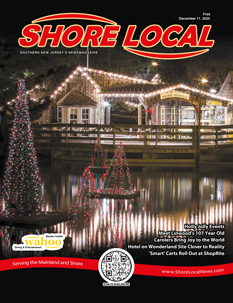Drink Up!
By David Setley
Last week was a celebration of the French wine harvest; this week, let’s travel west to California. The Golden State is popular for Cabernet Sauvignon and Chardonnay, both of which are grown throughout many wine countries and originated in France. But there are two less famous varietals that I believe California grows better than anywhere else: Zinfandel and Petite Sirah.
Zinfandel is the third most harvested grape in California. Zinfandel grapes are in the Vitis Vinifera species, meaning they belong to the European grapevine family. However, the exact origin is unknown. In 1967, a professor at UC Davis in California noticed similarities between Zinfandel and Primitivo, a red grape grown in the Puglia region of Italy. More than 30 years later, DNA testing has proven that Zinfandel and Primitivo are the same grape. But this only partially solved the mystery. Italy has long contended that Primitivo is not a native Italian varietal and was imported in.
Zinfandel is often confused with a sweet wine: the sweet pink wine known as White Zinfandel. Incidentally, White Zinfandel was an accident at Sutter Home Winery in California more than 50 years ago when winemaker Bob Trinchero was attempting to make Zinfandel. The batch he was producing suffered from stuck fermentation, meaning the fermentation process spontaneously stopped while the alcohol level was relatively low and the residual sugar was more than double what it should have been. The color was pink because the tannins in the skins had not fully transferred to the wine. Not wanting to waste the batch, Trinchero bottled the wine and marketed it as White Zinfandel. It was an unexpected hit! According to a San Francisco Chronicle report in 2003, White Zinfandel was America’s most popular varietal from the early 1980s until the late ‘90s. The victim of White Zinfandel’s popularity was Zinfandel. Many wine drinkers were unaware that a dry, red wine called Zinfandel even existed. I learned of Zinfandel in the late 1990s, but had to refer to it as “Red Zinfandel” to be sure wine stores gave me the right bottle.
I love a good Zinfandel. This wine is bold and intense with the fruit flavors of ripe blackberry and strawberry with notes of tobacco leaf, smoke and spices. It is a food-friendly wine that is full-bodied with medium acidity. A reasonably priced and excellent one is OZV Old Vine Zinfandel. This wine is approachable and smooth with a rich mouthfeel and notes of vanilla bean and cinnamon. However, my favorite Zins are made by Turley Wine Cellars. Larry Turley is the owner and proprietor of this relatively small winery. The Turley Zinfandels are the pinnacle of how great this varietal is. They pair well with barbecued meats and poultry as well as spicy dishes.
The second California wine to celebrate is Petite Sirah, not to be confused with Syrah. Though Shiraz (from Australia) and Syrah are the same, Petite Sirah is its own varietal. Petite Sirah is a hybrid wine, originally found in France and named “Durif”. Durif’s parent vines were Syrah and a local French grape called Peloursin, which is now virtually extinct. Durif never gained popularity in France. It was in California where the grape struck gold! From Prohibition until the early 1960s, Petite Sirah was one of California’s most popular wines. It wasn’t until the late 1960s and ‘70s that Cabernet Sauvignon became the state’s top red wine.
Petite Sirah is a dry, bold, full-bodied and high-tannin red wine. The flavors are ripe red plums and blueberries with notes of black pepper, chocolate and black tea. This wine pairs well with everything from steak to beef stroganoff to grilled chicken. Bogle makes a fine Petite Sirah, but my favorite is the J. Lohr Tower Road Paso Robles Petite Sirah. Jerry Lohr and his family are celebrating the 50th anniversary of his company and are committed to sustainable farming. Winemaker Brenden Wood describes their Petite Sirah as “delightful red and blue fruit on the palate, leading to a finish of exquisite length, concentration, and well-balanced structure.”
What could be better than to combine these two great varietals into one great wine? Caymus has done just that with the Caymus-Suisun The Walking Fool. Caymus Vineyards is unquestionably among the most revered wineries in California. Founded in 1971 by Lorna and Charles Wagner Sr., the winery is still 100% family-owned and operated by Charlie Wagner (Charles Jr.). The family’s newest venture is the Caymus-Suisun Winery in the Suisun Valley. The Walking Fool is produced by Charlie’s wife, Jenny, and is named after Jenny’s great-great-grandfather, Johannes Glos, who came to Napa Valley in the 1880s. Glos often traveled by foot, thus earning his affectionate nickname: the walking fool. This is a vibrant blend of Petite Sirah, or “Grand Durif” as Caymus calls it, and Zinfandel. This gem has the flavors of ripe raspberries and tart cranberries with a savory touch of espresso. My wife and I first tried this on a fall weekend getaway to Lake George, New York, a few weeks ago. This blend is also priced much more reasonably than most of the Caymus products.
I invite you to stop in to discuss these and other wines. As always, feel free to contact me at dsetley@passionvines.com. Until next time, Happy Wining!
David Setley is enjoying his retirement from higher education as a wine educator and certified sommelier at Passion Vines in Somers Point, New Jersey.












